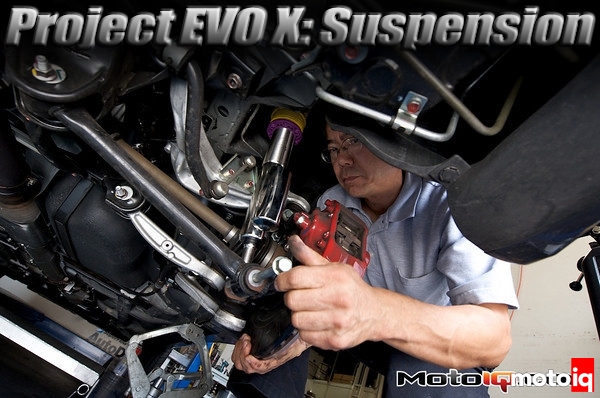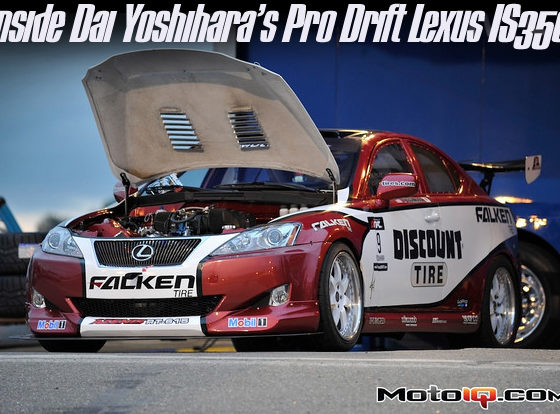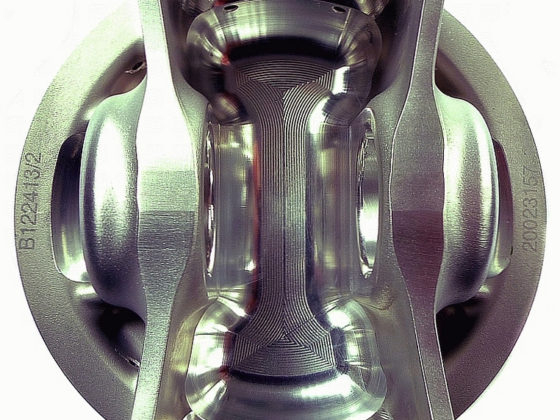,
 |
| The trick Whiteline sway bars are around 60 % stiffer for the front and 75% stiffer for the rear respectively. The bars mimic the factory bends for good clearance to suspension links and the chassis and have 3-way adjustably that can change the bars stiffness by 30%. This is essential for quick tuning. The bars also have good quality powder coating, hard urethane bushings and locating bushings so they stay centered |
The front KW struts have an eccentric on the upper strut to spindle bolt making the camber adjustable and allowing the use of the stock upper spring seat which helps keep noise and vibrations from reaching the drivers compartment. The rubber isn’t as sharp responding as a race type camber plate with a spherical bearing but it isn’t annoying in daily driving either.
The V3’s have a spring rate of 455 in/lbs in the front and 515 in/lbs in the rear, reasonable for a 3500 lb car. A higher rear spring rate is used because the multilink rear suspension has a higher motion ratio that the McPherson strut front suspension. Even with the higher rear spring rate the wheel rate is actually lower in the rear. The main springs are also paired with helper springs to keep tension on the main springs even when the suspension is at full droop. This helps keep the coilovers quiet.
 |
| One of our tricks is to wrap the swaybar in teflon tape where the bushings ride then greasing the bushings. This reduces friction which helps give a smooth ride and eliminates squeaking. This trick works for all squeak prone urethane bushings. Tell them you read about it here at MotoIQ! |
Finally the KW’s have a shorter shock body so the car can be lowered without giving up wheel travel. Bottoming under roll when cornering is the #1 cause of ill handling in modified cars so its critical not to give up bump travel in a lowered car. We adjusted our EVO 1” lower for now and will probably lower it some more once we decide what wheel and tire combination we are going to run.
With our dampers handled, we turned our attention to the antisway bars. We chose Whiteline bars for our EVO. The Whiteline bars are really high quality; they are 3-way adjustable with an excellent fit with a glossy rust resistant powdercoated finish. Unlike other aftermarket bars, we don’t have to worry about bind and interference with other chassis parts with Whiteline. The Whiteline bars pivot on hard polyurethane bushings.
 |
| Installing the front bar was pretty hard. Howard had to disconnect the powersteering lines from the front subframe and undo the rear motor mount. The front crossmemeber had to be unbolted and removed. Finally the front subframe could be unbolted and lowered so the swaybar could be shimmied out, whew! |
The Whiteline bars are 27mm in the front up from 25.5mm stock. Since the stiffness of an antisway bar increases approximately to the 4th power of the diameter, the Whiteline bar is around 60% stiffer than stock. The adjustments can vary the stiffness about 30%. The rear bar diameter is 26mm up from the stock 23mm. This is about a 75% increase in stiffness. The adjustments can also change the stiffness around 30% as well. This increase is significant and will greatly reduce roll. The adjustability is also important to help balance the car from track to track or from street to driving event.



